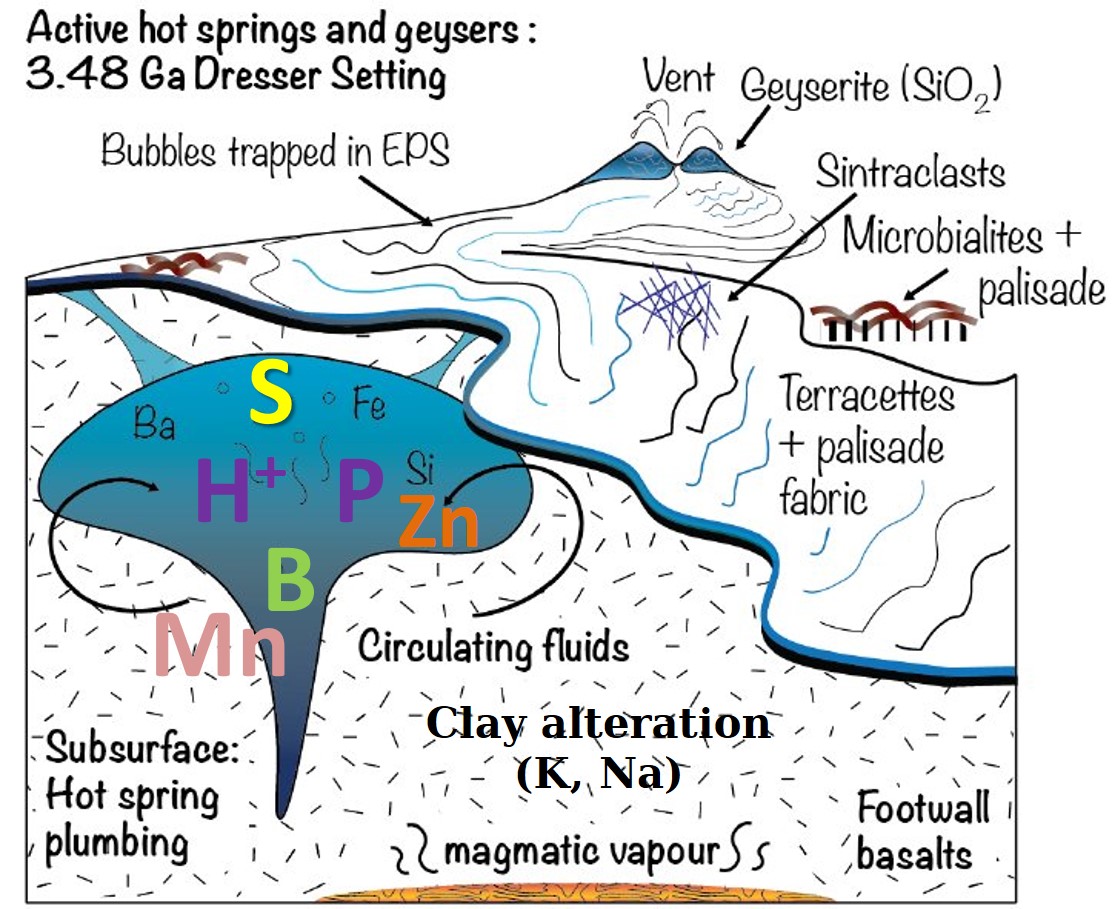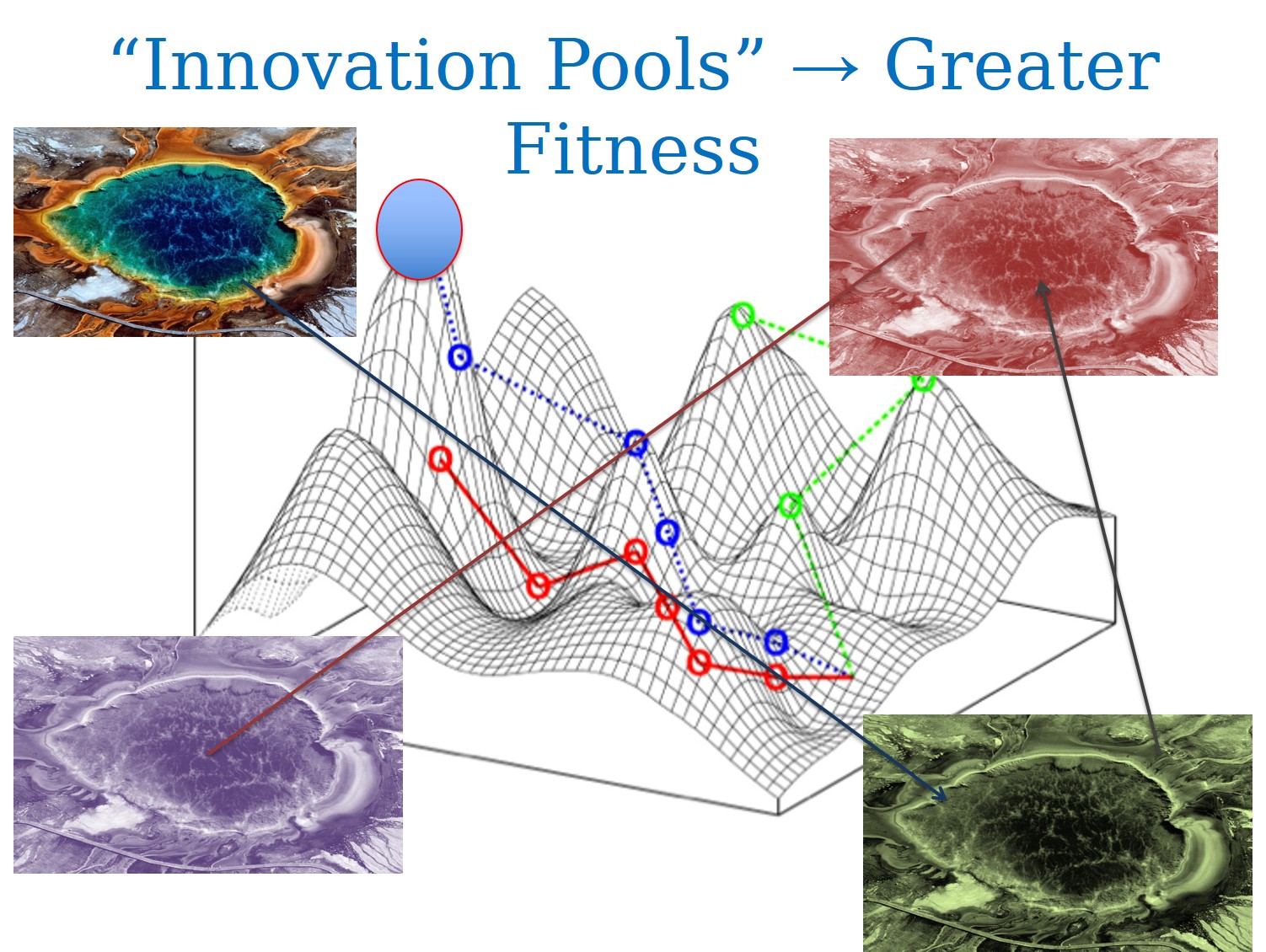Elements for the Origin of Life on Land — A Deep-Time Perspective from the Pilbara Cratonof Western Australia
Key Points
- On-land hot spring field is a more likely candidate as a nursery for the Origin of Life, because of its wet–dry cycling and greater chemical complexity, rather than the uniform ocean with dilute nature.
- The hot-spring settings on early Earth, reconstructed from the Dresser Formation, Pilbara Craton, have been chemically heterogeneous, and concentrated in the elements required for the Origin of Life and to get life started.
- The Pilbara analogue should be a key guide for astrobiology and the search for life elsewhere in the Universe.
Overview
Water is one of the prerequisites for life to appear on a planet, and deep-sea hydrothermal vents have been a preferred setting for the origin of life. However, its propensity to dilute critical prebiotic elements and to retard polymerization of organic molecules suggests that a terrestrial hot spring field with the capacity for wet-dry cycling and element concentration represents a more likely candidate.
At a 3.5 billion-year-old, anoxic hot spring setting from the Pilbara Craton, Western Australia, its hydrothermal veins and compositionally varied pools and springs have concentrated all of the essential elements required for prebiotic chemistry, including not only the organic elements, C, H, N, O, P, and S, but also the critical trace elements, B, Mo, Zn, Ti, Mn, and K (Fig.1).

Temporal variability, together with the known propensity of hot springs for wet-dry cycling and information exchange, would lead to innovation pools with peaks of fitness for developing molecules (Fig.2).
An inference from the chemical complexity of the Pilbara analogue is that life could perhaps get started on planets with volcanoes, silicate rocks, an exposed land surface, and water, and the ingredients should form the backbone in the search for life in the Universe.

Reference:
- Martin J. Van Kranendonk, Raphael Baumgartner, Tara Djokic, Tsutomu Ota, Luke Steller, Ulf Garbe, Eizo Nakamura. Elements for the Origin of Life on Land: A Deep-Time Perspective from the Pilbara Craton of Western Australia. Astrobiology, 21, 1, 39–59 (2021). doi: 10.1089/ast.2019.2107, dream/20210112021344-497318.